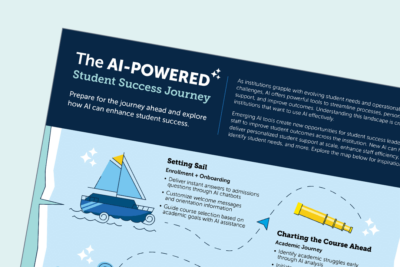Meeting Student Needs with Limited Resources
Small colleges play a key role in the U.S. higher education system. Roughly half of American nonprofit colleges enroll fewer than 2,500 students. While individually small, together these schools serve nearly 1.7 million students and play important roles in their local communities. Now, several years of flat and declining enrollments are creating financial pressures that are forcing smaller institutions to reevaluate their long-term sustainability.
As it becomes harder to recruit new students, retaining current students becomes even more important. Retention strategies keep students engaged and enrolled through to graduation. This is good for students, but it is also good for the school. A strong retention strategy plays a critical role in securing tuition revenue and protecting the sunk costs associated with recruitment.
Retention strategies at small colleges are most often built around relationships and tailored support. Providing this level of support for students becomes harder in times like these when budgets shrink, positions remain unfilled, and remaining staff are overwhelmed by additional responsibilities.
In response, small colleges are looking to free up time for their student success team members by eliminating administrative burdens, thus allowing them to focus on their relationships with students. This paper explores ideas and tactics that small-college student success teams are employing to prepare for a future where they can meet student needs despite operating with limited resources.
We recommend this paper for provosts, deans, and chief student success officers at small colleges as a resource to understand how automations and AI can rebalance staff time and improve the student experience.
More Resources

From Caution to Curiosity: Higher Ed Success Staff Weigh in on AI's Role in Student Success

The AI-powered student success journey

Student success teams are already using AI on a daily basis. Here’s what institutions need to know.
Access the insight paper
This insight paper is available through EAB's Navigate360. Complete the form below for immediate access or log in.